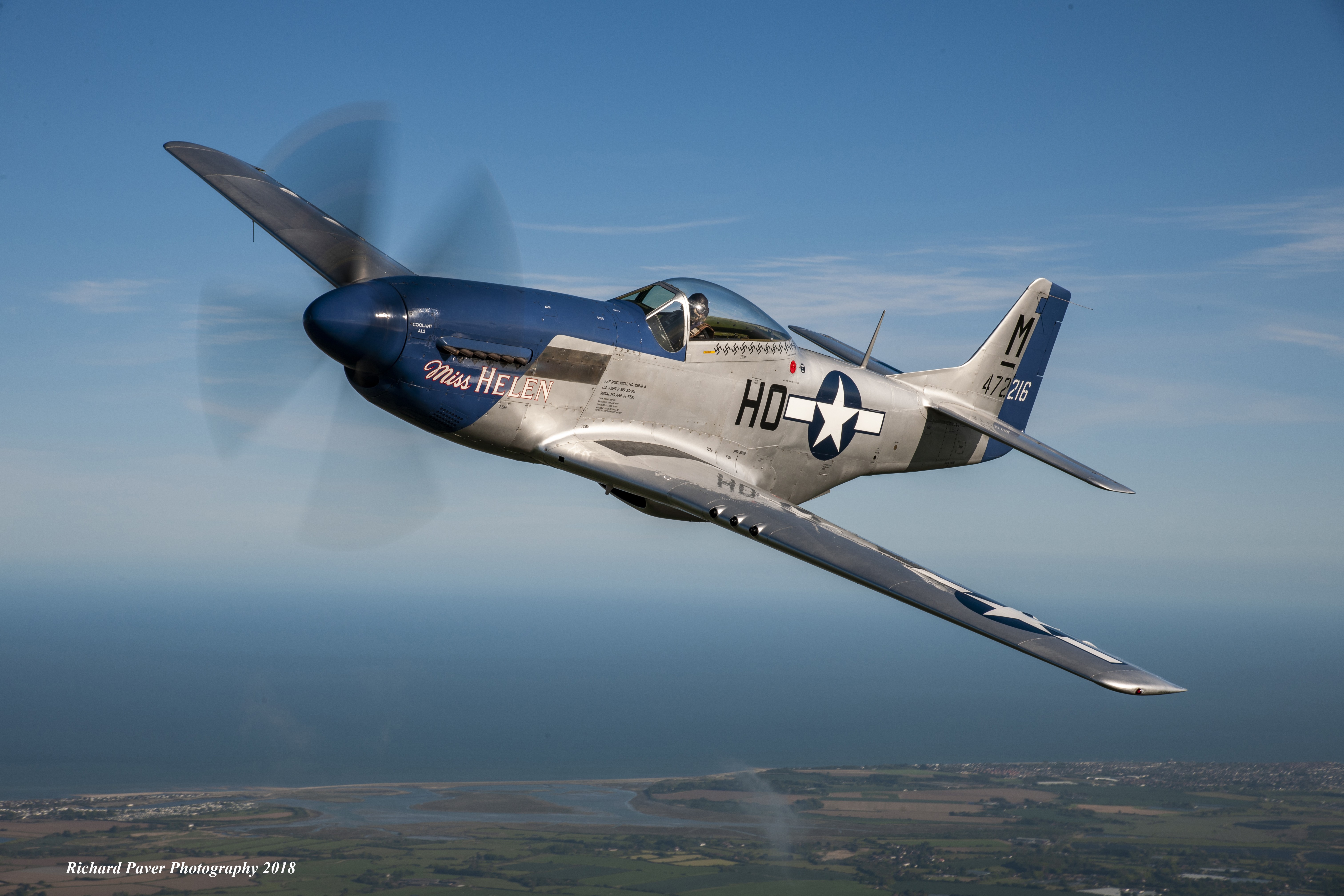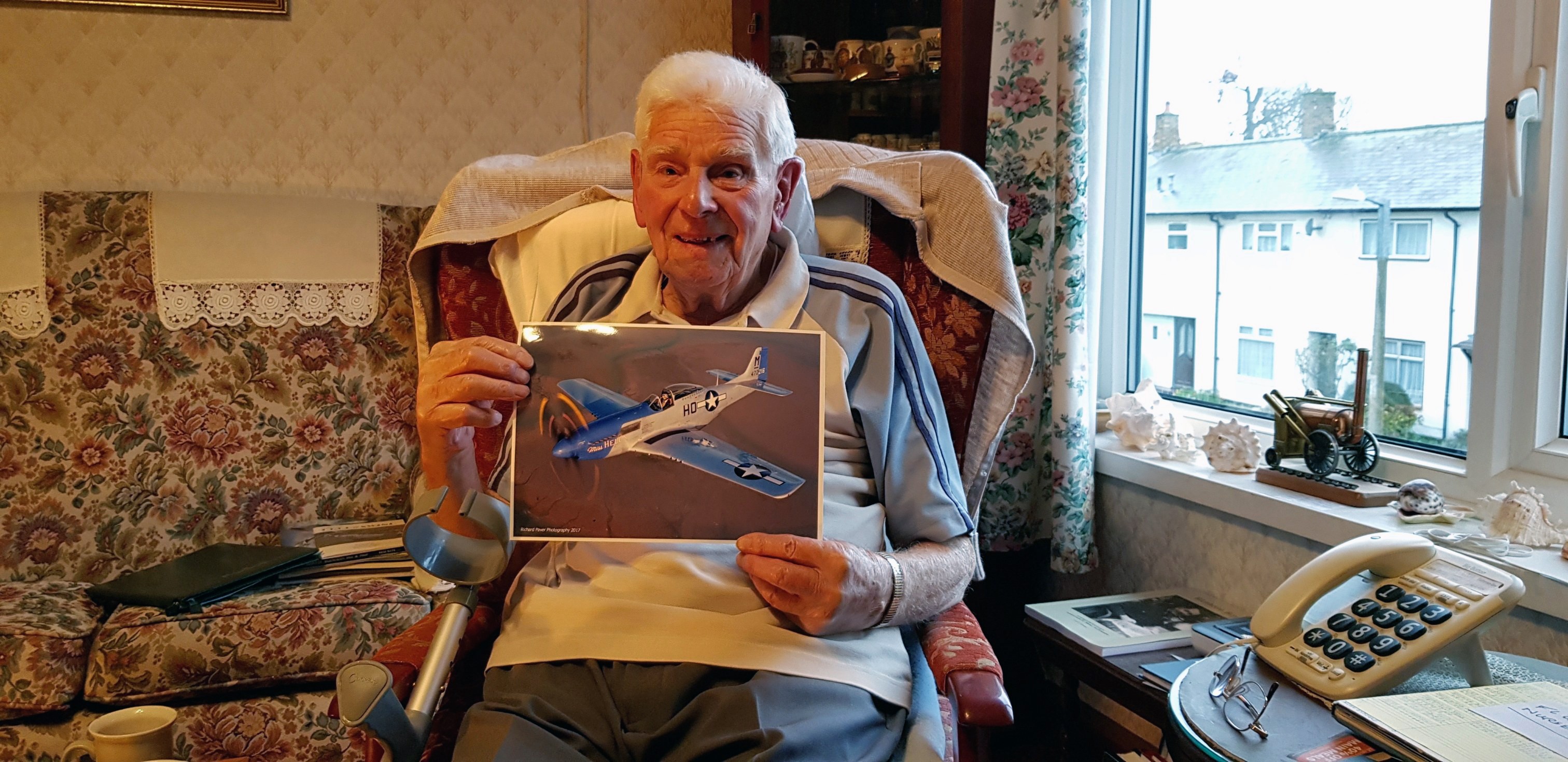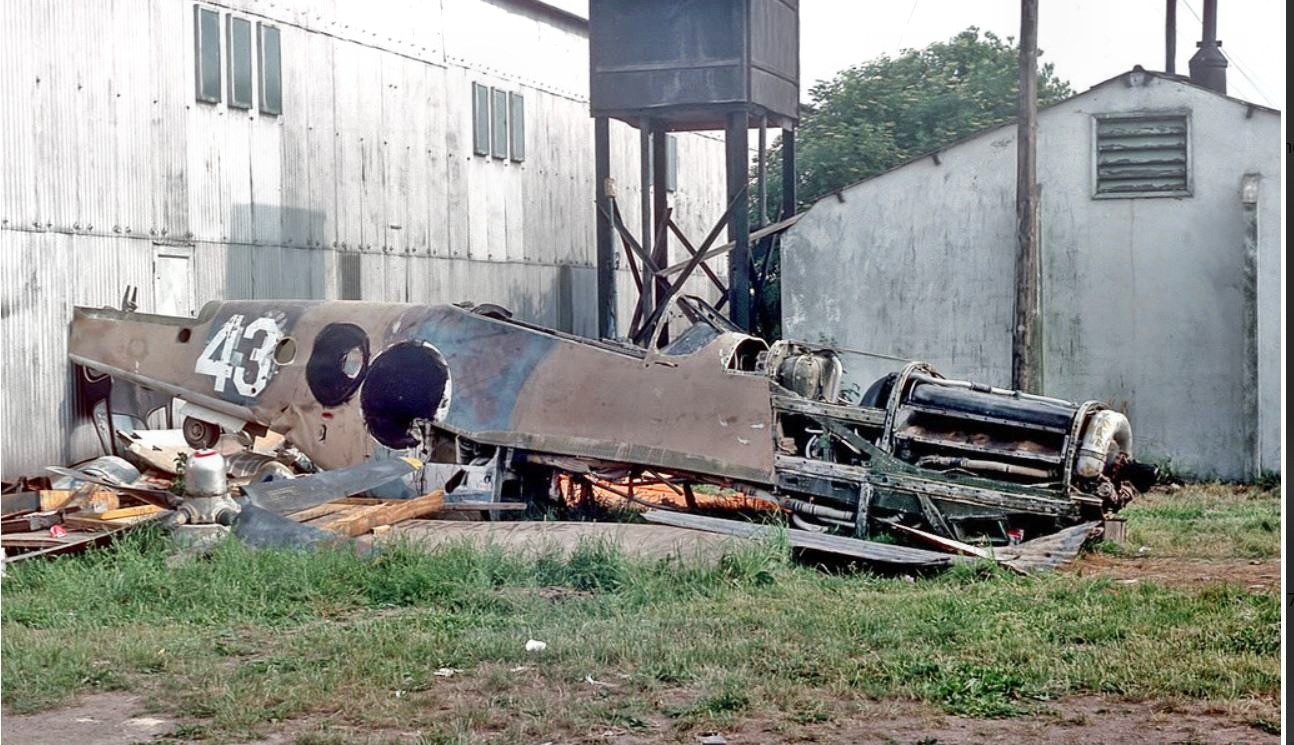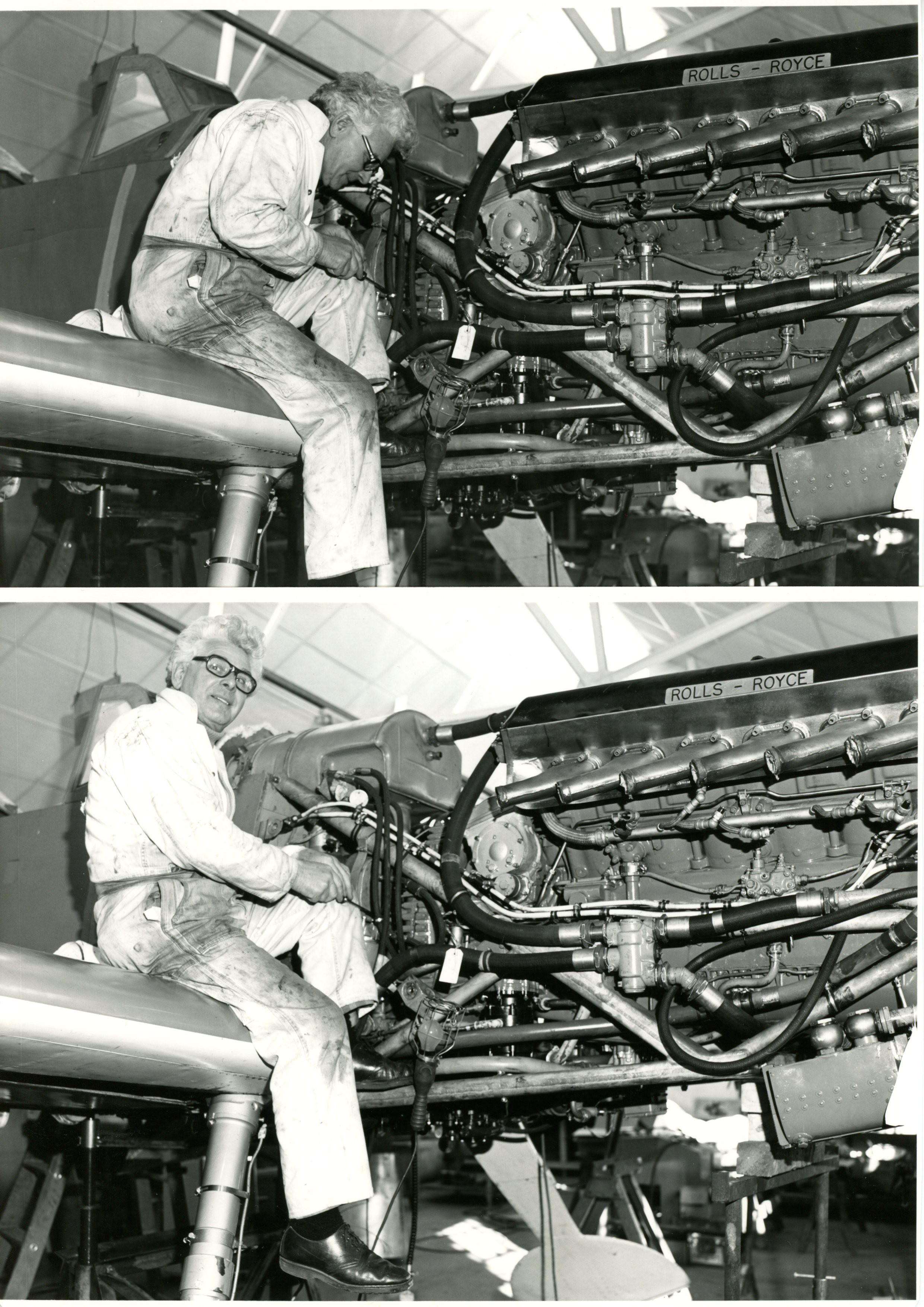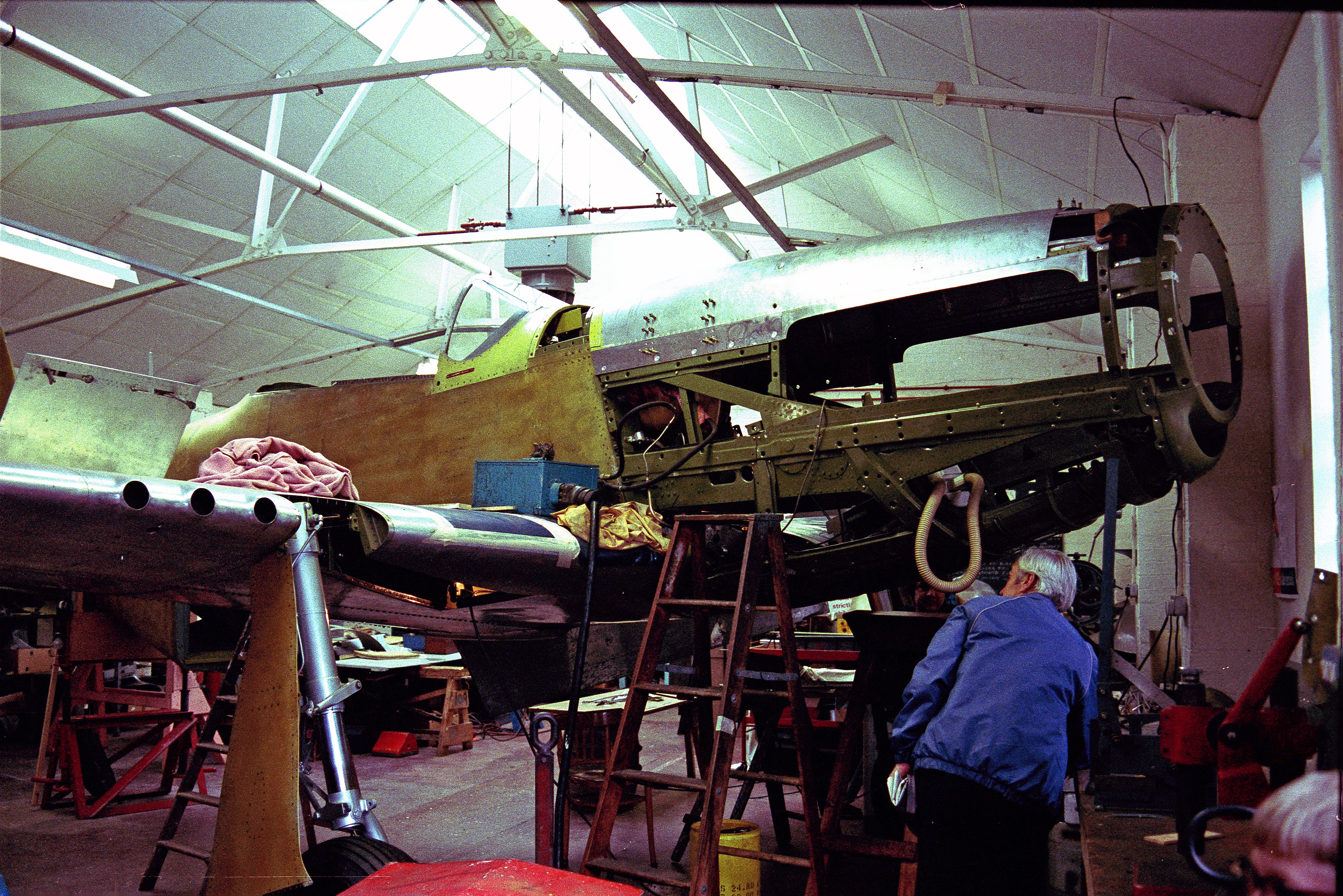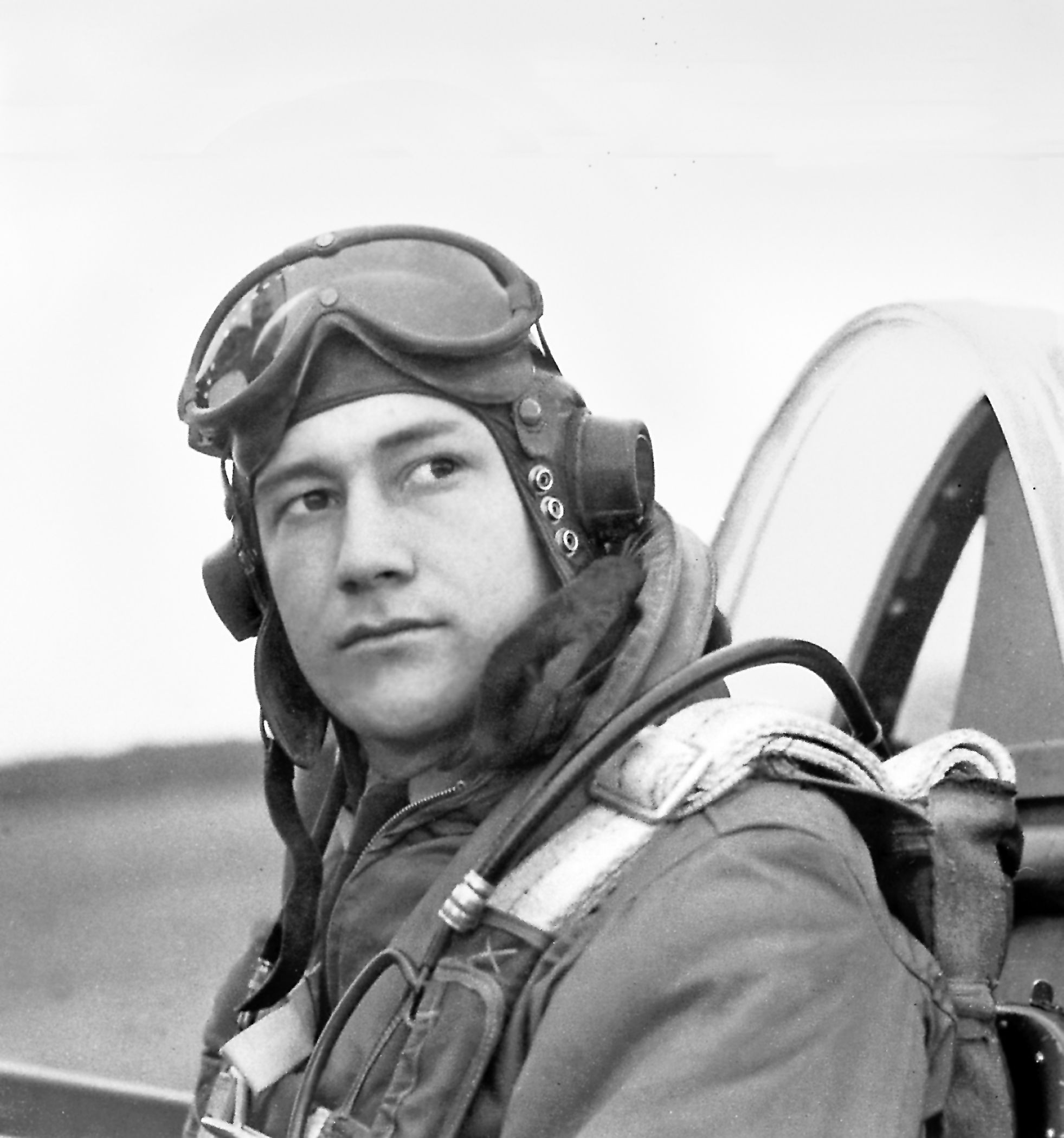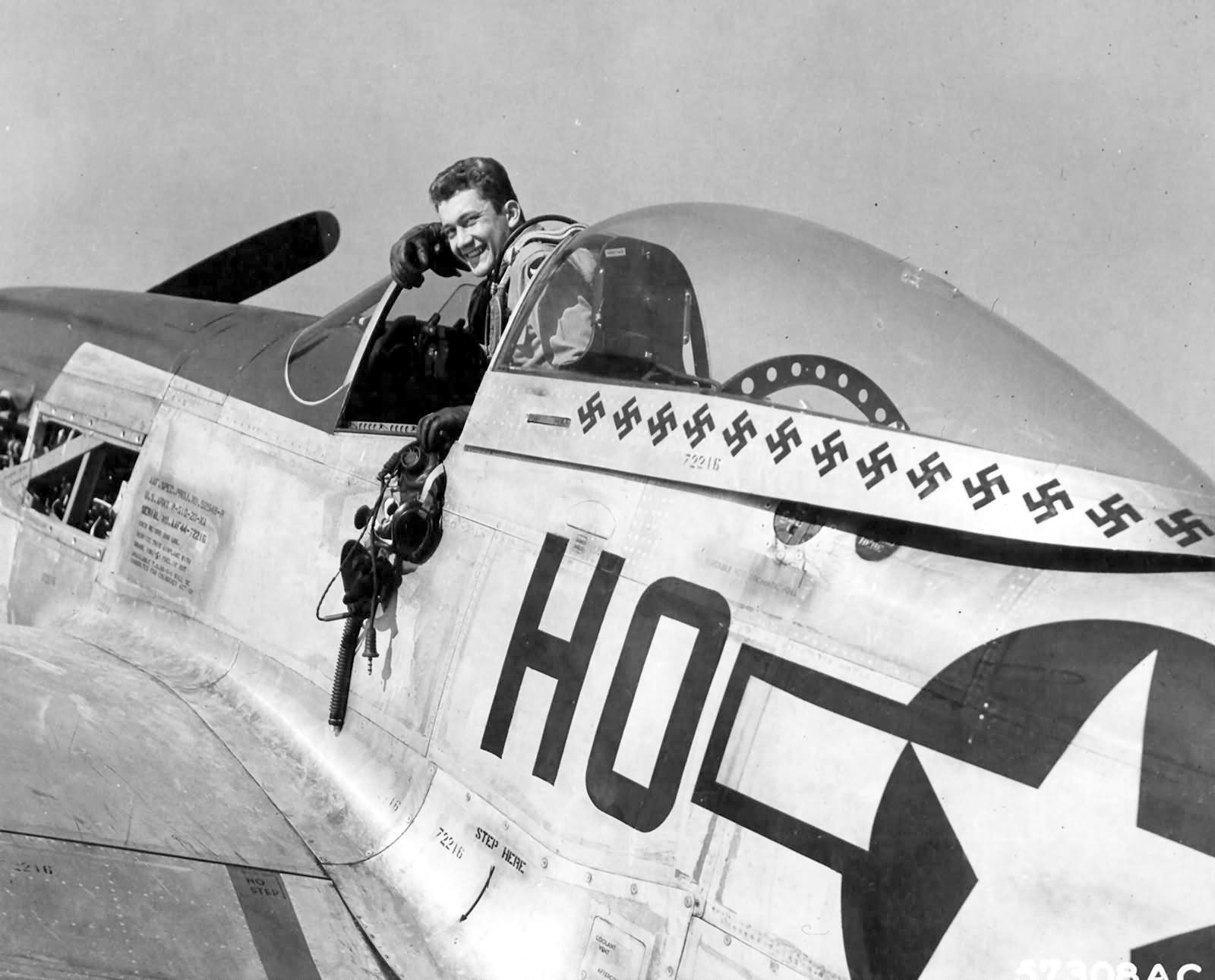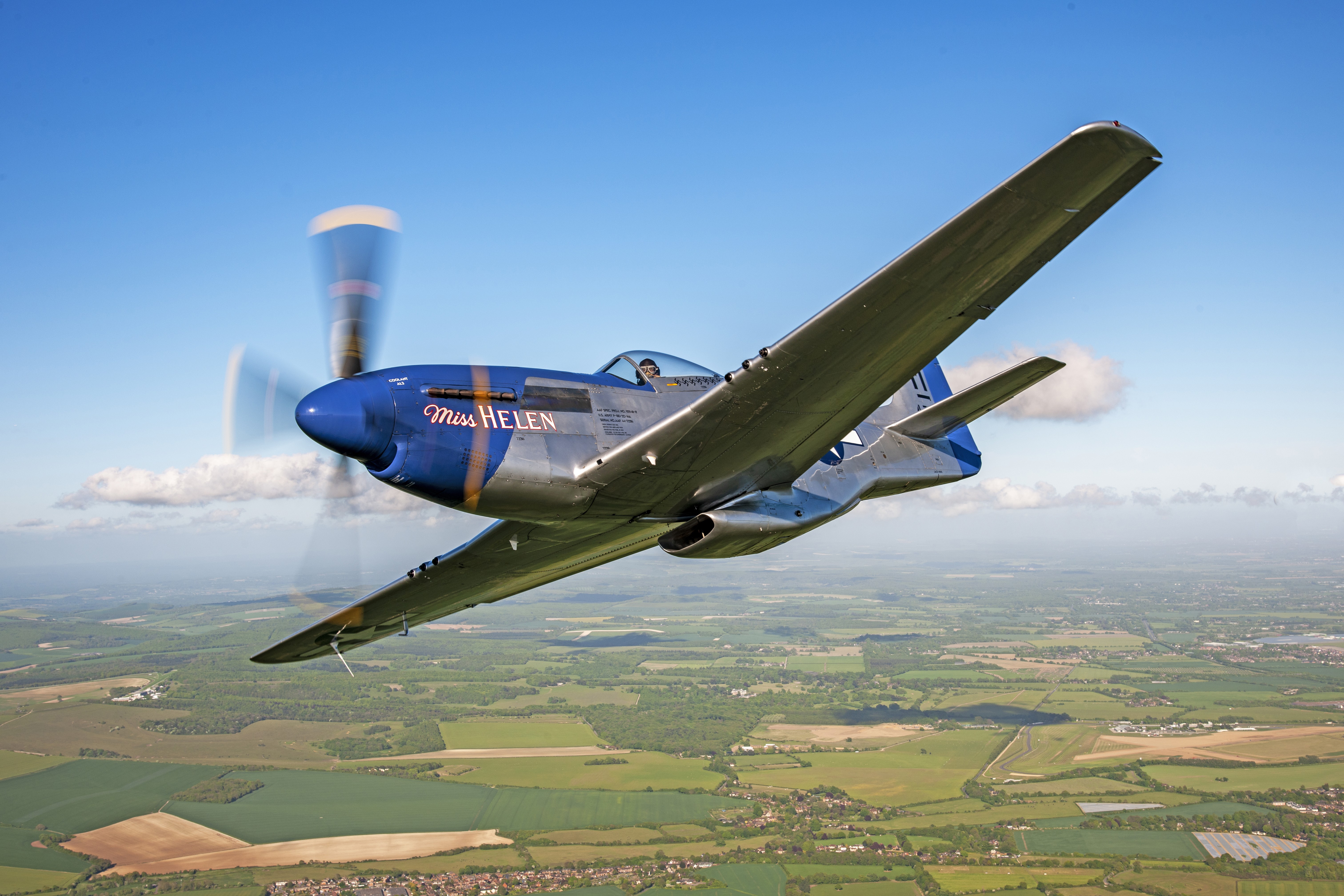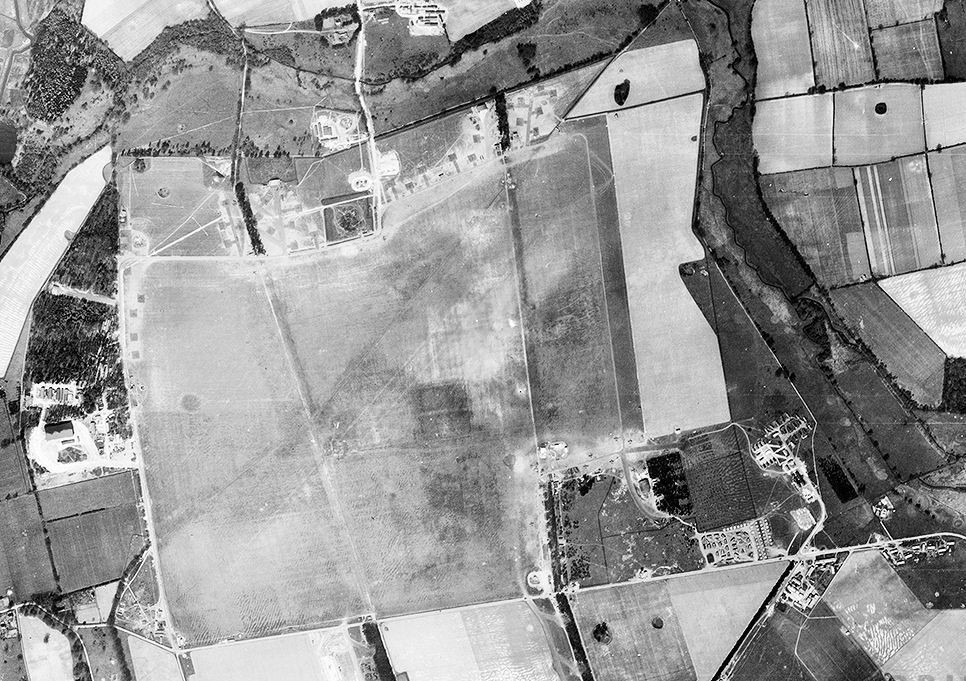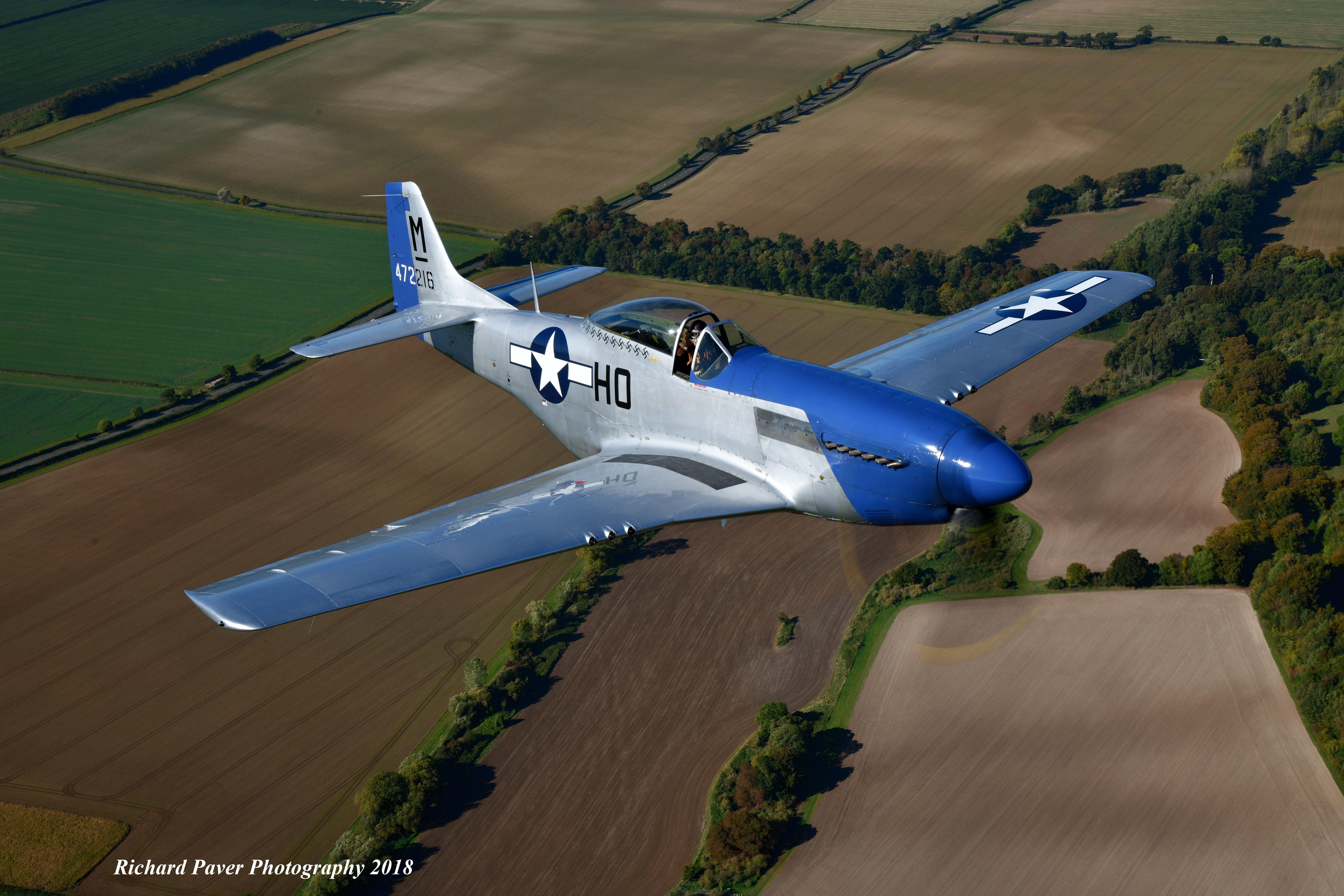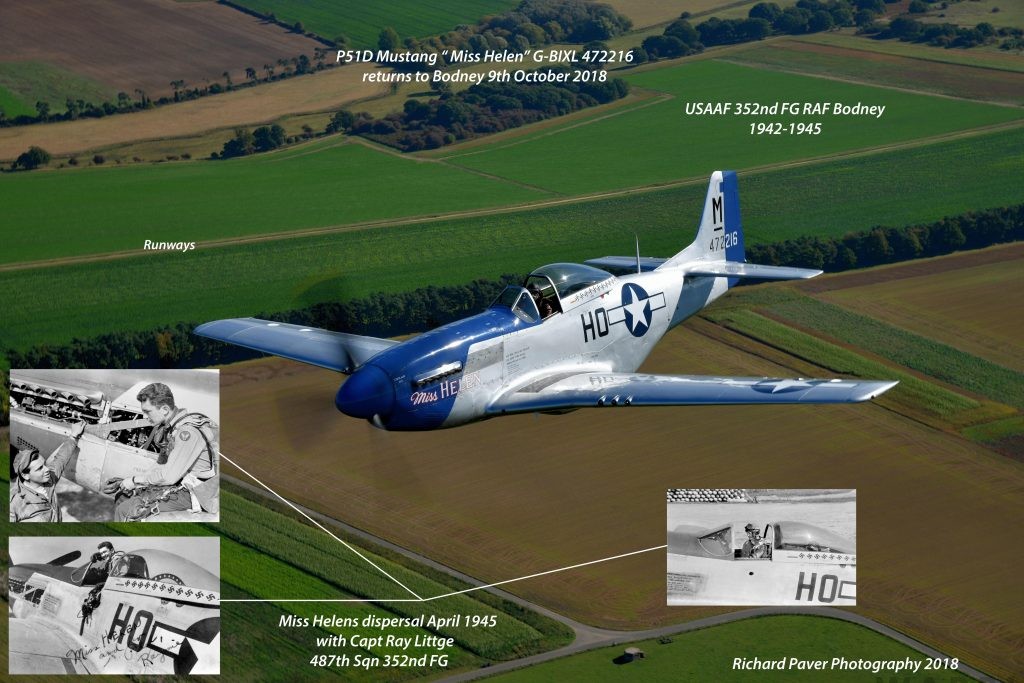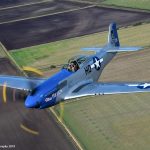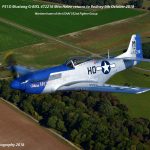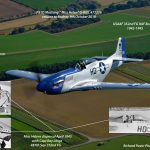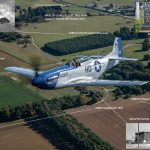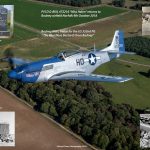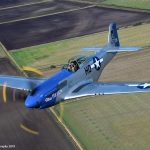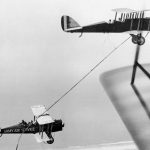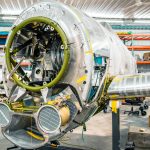by Richard Paver
If you’re unfamiliar with the term rephotography, it involves the process of reshooting old photos, as accurately as possible, from their same vantage point and scope in the present day. This can prove complicated to achieve, especially when it comes to older photographs, as places can change dramatically over time, which can make it exceedingly challenging to find the exact spot where someone captured an image many decades, or even a century or more earlier. Social media has produced a lot of great work on the ‘Then and Now’ subject, often portraying locations of WWII battles or other historic events. That being said, photographer Richard Paver has taken this art to whole new level, by incorporating warbirds overflying historically significant locations in Royal Air Force history.
by Richard Paver
The history and story behind the recovery and restoration of North American P-51D Mustang 44-72216 Miss Helen has been recounted in the aviation press on several occasions. In view of this I recently decided to add some further dimensions to the history of the airframe. Firstly, I planned to photograph Miss Helen during a unique return to its wartime home at Bodney and secondly I interviewed Norman Chapman the engineer who led its restoration work – this restoration project is historic in its own right as it commenced over 40 years ago and was one of the very first airworthy restoration projects for todays warbird movement.
Norman Chapman is 98 years old now and lives in Harlow in Essex. With the help of the 352nd FG historian, Bill Espie, I was able to meet Norman, have lunch with him and discuss his involvement with Miss Helen which began in the late 1970s. Norman is an aircraft engineer with huge experience in working on a massive variety of types – everything from WWII warbirds to vintage piston transport aircraft and commercial passenger airliners. Norman worked at the Royal Air Force’s No. 71 Maintenance Unit during WWII. After the war, he worked with Freddie Laker for many years. As well as a keen memory, Norman also has a collection of photographs and scrap books which record, in some detail, all of the various aircraft types and projects he has worked on throughout his career.
I met him at his home on November 20th, 2018, and he told me: “After Robs Lamplough had shipped all the ex-Israeli Mustangs to the UK in 1976, he initially had them stored in pieces at Booker. He then wanted a base with the space to start a restoration project, and moved them to Duxford in 1977 where there was plenty of available hangarage and empty workshops. He asked me to go and see all his Mustangs – he had shipped four complete aircraft, plus a load of components from Israel to the UK and he asked me to let him know if I thought that we could get one flying again. I took a good look at them all and immediately picked out IDF No.43 as the best, because it had a virtually corrosion free fuselage. All the others had varying amounts of corrosion, especially in the longerons, and although the longerons can of course be replaced, that would take a whole lot longer and cost a lot more than utilising IDF43 as the basis for an airworthy restoration. At first Robs Lamplough took some convincing that IDF 43 was the best bet, because when it had been in the Israeli Kibbutz and used as a child’s plaything, a kid had got stuck inside the fuselage and so the skins had to be cut to get the child out unharmed. This child had got into the rear fuselage over the radiator and then couldn’t get back, so someone had to cut open the fuselage. Robs thought that this would mean IDF 43 could never be restored to flight, but I took a close look and with two new frames and some skin work, it was easily fixable. As the rest of IDF43 was in such good condition, there was no doubt in my mind that this was the best of the bunch.
We also had a fairly decent wing with IDF43, but it did have some damage Robs had also got hold of another mainplane from a Dutch Technical college at Delft. This was in perfect order, so we selected that to go with the fuselage of IDF43. This new mainplane came from 44-72770 and required a lot less work to get it flying compared to the wing on IDF43.” (Authors note: The original wing from IDF43 went on to be used in the restoration project of P51D G-LYNE at Tees-side in the early 1980s. This project was never completed in the UK and is now in the USA as N514L 44-72028)
“We therefore set up the project in shed No. 72 at Duxford, but I was working for Laker Airways at the time, so I could only work on the Mustang in my spare time. I pulled together a volunteer team of about six young guys who were all ‘keen as mustard’ to get the Mustang flying, and we started part time on the project working every Tuesday evening and most weekends whilst I was still at Laker. Later on, Robs put up a new Hangar at North Weald and we then moved the project there in the summer of 1981. I was then taken on full time by Robs after I lost my job with the collapse of Laker Airways in early 1982.”
“It is very important to appreciate that at that time I had no interest or involvement in the aircraft’s history – I had been taken on to get the Mustang flying and that is where I spent all my time & effort. I didn’t have a clue about the 352nd Fighter Group or who they were, and I was not involved in this particular aircraft’s lineage. During paint stripping, we noted and saw the USAAF serial on the lower part of the fuselage and then just got on with the job. The Israeli camouflage was very roughly applied, and we stripped it all back to bare metal and the original serial was visible etched in the metal. I never saw any signs during paint stripping of “Miss Helen” having been applied to the aircraft, but we did see during paint stripping “Miss Nita” on one panel, but again, this meant nothing to me. As well as running the restoration, I was spending a lot of time getting CAA approval for various mods that we wished to carryout – for example from the very start we wanted to make sure that the pilots and PAX seats stressing came up to 9G and this involved increasing the seat frame tube gauging, improving all the support bracketry, floor fixings and harness supports. This was just one mod that required many new drawings and a great deal of time spent there were many others and so that was where I spent my time.
It was much later – I think after the aircraft’s first flight – that its identity was further researched and at that time 44-72216 was identified as a P-51 that had been with the 352nd FG at Bodney, then shipped to Sweden post war and then on to Israel. We have copies of all the official documents that list all the surplus 8th AF Mustangs that went to Sweden after the war.”
Paver)
The aircraft was registered G-BIXL and its first post restoration flight took place at North Weald on May 5th, 1987 with Lloyd Hamilton at the controls. Further test flying was carried out by Mark Hanna at North Weald and after these flights were completed, the aircraft was finished in an all over silver scheme. The aircraft only wore this silver scheme for a short period because in 1989 along with 5 other Mustangs G-BIXL was contracted to fly in the Memphis Belle film at Duxford. For the film it was repainted in an all over olive drab scheme and coded AJ-L with the nose art “Miss L”. Robs retained the film paint scheme on the aircraft until 2001 when it received its 352nd FG blue nose scheme with Miss Helen nose art plus Ray Littge’s 13 kill markings on the canopy frame, which it retains today.
The 352nd FG records show that 44-72216 was received at Bodney on 9th April 1945. On the 10th April she was flown to the 364th FG at Honington to have the hard points fitted. The civilian contractors who did this work had left Bodney in December 1944 when the 352nd went to Asch in Belgium and these contractors never returned to Bodney so this work was carried out off site. The fitting of hard points was completed quickly and 44-72216 was returned to Bodney on 11th April 1945. At this time the 352nd FG group was still in Belgium, but they returned two days later on 13th April and then 44-72216 was assigned to Ray Littge.
Although Ray Littge referred to his personal Mustang as Miss Helen in correspondence with his fiancé Helen Fischer, there is no evidence nor are there photographs which show this name on the aircraft during its time at Bodney. Indeed, it is unlikely that the Mustang ever wore the name Miss Helen – pilots had to pay the squadron artist to paint personal nose art on their steeds, so with it being April ’45 and the war in Europe effectively over, Ray Littge would likely have not thought the expense worthwhile to commemorate the few remaining operational missions he had left to fly before his tour ended and he returned home.
The 352nd FG’s individual flight record cards documented that Ray Littge, on his return from Belgium, flew two missions on April 16th in P-51D 44-14812 (HO-T) Slender Tender & Tall, the former mount of Lt. Col. William Halton. Ray Littge amassed 7 ground victories during those sorties. His next operational mission was in 44-72216 on April 17th, 1945, when he scored 6 ground victories whilst straffing Prattling airfield in Germany. His combat report for this operation is available and describes how his Mustang received flak damage in the oil tank; one .50 calibre machine gun was also knocked out of action with its electrical and manifold pressure lines cut. Despite these issues, Littge managed to return home to Bodney with the wounded Mustang; indeed 44-72216 had suffered substantial damage on her maiden combat mission. Interestingly, many year’s later during the aircraft’s restoration, Robs Lamplough’s former chief engineer John Hart reported that field repairs to 44-72216’s oil tank support structure were still evident; these may well have resulted from Littge’s April 17th, 1945 sortie.
Following the sortie which resulted in damage to 44-72216, Ray Littge flew another nine times before his tour finished, but not all of these flights were combat missions – one on April 19th is described as a local T-6 flight at Bodney, while another was a 20 minute test flight at Bodney in a Mustang. However, the exact identity of which aircraft Littge flew in the closing stages of the war is not available in his individual flight record. It is possible, therefore, that he only flew 44-72216 on that single ground attack mission against Prattling. We also don’t know whether any of his final missions were in 44-72216, as we have no records regarding how quickly the aircraft was repaired following the flak damage. Ray Littge’s final combat mission in WWII took place on 25th April 1945, although he did not encounter enemy aircraft during that sortie. His tour over, Littge went on leave and had the opportunity to say goodbye to his 352nd FG friends before returning to the USA on May 4th, 1945.
We do know that the 352nd official photographer Paul Grabb took some publicity photographs of Ray Littge at Bodney after he had concluded his tour when he was no longer flying operations. These include one of Ray Littge posed in the cockpit of 44-72216 wearing full flight gear and another sitting on the wing of 44-72216 talking to his crew chief Sgt W. Moller when Ray was wearing parachute and full flight gear. These photographs were undoubtedly posed for publicity and are also notable due to the fact that the left-hand engine panel has been removed and whilst the serial 44-72216 is visible there is no sign of “Miss Helen” nose art. We do know from the squadron records that after Littge finished his tour 44-72216 was assigned to Capt. Russell Ross and renamed “Miss Nita”. The squadron records are incomplete at the end of April 1945 and therefore we don’t know what operational missions if any that Russell Ross flew in 44-72216.
It is highly likely therefore that when the posed publicity photographs were taken of Ray Littge at Bodney with 44-72216 shortly before his return to the USA that the aircraft had been repainted as “Miss Nita” which probably explains why the engine panel had been removed for the photos.
In 2016, I discussed the aircraft’s history with Miss Helen’s present owner, Robert Tyrell, and put forward the idea of an air-to-air photo shoot over Bodney. Having previously visited Bodney on the ground with the 352nd FG historian, Bill Espie, I was able to describe what can be seen on site at Bodney today to Robert Tyrell. Sadly, there is very little left which reveals this all-grass airfield’s historic past, but the control tower and fire engine shed are still in existence, together with long stretches of concrete perimeter track and some concrete hardstandings. However, nothing remains to show the original runway alignment, as a large part of the site returned to agricultural use immediately after the war. A line of mature trees now cuts directly across the line of the main runway, making it even more difficult to see where the wartime runway was originally positioned. Many of the 352nd FG Mustang dispersals were situated on the grass with PSP (pierced steel planking) matting, and revetments constructed from stacked timber wing tank crates – so none of this remains today
Tyrell readily agreed to the idea of a return to Bodney, so we hatched a plan to shoot the aircraft over the control tower and, if possible, directly over the area where Ray Littge had his dispersal. Interestingly, a detailed plan of all the 487th FS pilot dispersals still exists thanks to the efforts of former 487th crew chief Al Geisting, who drew the map during a visit to Bodney in 1998. The exact position of Ray Littges dispersal is annotated on this plan and it lies right on a bend in the concrete perimeter track directly opposite a pill box defensive position. Both the perimeter track and the pill box are still there today so, using Google Maps, I could plot the exact spot where Ray Littge had flown from.
Planning for this photo mission took some time, but we were finally able to put it together in October 2018. It was by no means a simple to set up – firstly aircraft cannot land at Bodney today, as there are no runways and the site is now under a mix of different ownerships, with the majority being a Ministry of Defence (MoD) training ground. Any planning would therefore have to be done remotely, and whilst I had been to visit the site on the ground previously, neither of the pilots (John Dodd in Miss Helen and Bill Giles in the Aztec camera ship) had had this opportunity. Secondly, Bodney now lies within the approach to RAF Lakenheath, so we would need their permission to perform the photo flight. And third, Bodney is also now in restricted airspace, as the site is now part of an MoD firing range, permission from the range controller would therefore be required, and the range would also have to be inactive during the period of our photo flight.
Robert Tyrell asked John Dodd to fly Miss Helen for this flight and I set up the camera aircraft, a Piper Aztec with Bill Giles the owner/pilot. Both Bill and John are highly experienced with air-to-air photo-sorties and the precision formation flying which these flights require. Thankfully they both readily agreed to make this work over the Bodney site.
John Dodd was especially helpful, as he obtained the clearance to fly from both Lakenheath Air Traffic and the MoD range controller. The range controller agreed to close the range for one hour on a set day during which we had his permission to fly in the range – if the weather hadn’t cooperated on that specific day, during the one hour time allowance, then it was too bad, and we would have to call it off.
Thankfully on the chosen day, we had a good weather pattern across the whole of East Anglia – so for once in air-to-air photography the weather wasn’t a problem – quite a rarity! Other preparation for the photo flight included John Romain very helpfully loaning his authentic WWII-era fighter pilot’s Mae West for John Dodd to wear whilst flying Miss Helen.
One other consideration involved the Miss Helen nose art being only carried on the Mustang’s left side. I obviously wanted this in all of the photographs, so we had to plan all of the photo passes over Bodney itself with the Mustang forming up on the Aztec in echelon right. Another essential consideration involved not shooting into the sun and to have both the Bodney background and the Mustang well and evenly lit in the sunshine. Indeed, the sun’s position essentially determined our flight path over Bodney; the challenge would be to get both the control tower and the Mustang tack-sharp and well positioned in the same frame whilst passing low over the field, with the undoubtedly turbulent air which occurs at speed at low level.
On Bill’s suggestion, we took off from Duxford in loose formation. On arrival over Bodney, the Mustang held off a distance, whilst Bill flew the Aztec on a couple of reconnaissance passes over Bodney, so he could check the flightpath, while getting a clear visual identification on the old control tower so he could plan the exact route for the photo-passes.
Bodney’s old control tower, though still visible from the air today, is gradually becoming overgrown with trees and other vegetation, so these recce passes were invaluable to ensuring that the photo sortie was successful. Unless the undergrowth is cleared away, the control tower will soon disappear beneath this canopy of trees and be invisible from the air. As we passed over the site during the recce flight I pointed the location out to Bill; indeed both the control tower and also the Littge dispersal were visible. Although Bill had input the coordinates for these locations into the Aztec’s navigation kit, we still needed visual confirmation before we called the Mustang in for the actual photo passes.
After completing the site recce, and on request from Bill Giles, John Dodd quickly formed up with us in Miss Helen about a mile from Bodney. We then made two formation passes with the Mustang over the derelict Bodney control tower, each flyby working perfectly – I had planned one shot with the Mustang positioned over the tower in the photographic frame, and the other with the Mustang below it. We then flew a further pass over the Littge dispersal, but missed it on the first attempt – we were too close, so the Mustang obscured the site as we passed over it. After a discussion between myself and Bill over the Aztec’s intercom, Bill flew another circuit, and this time moved us out across the field so that the perimeter track adjoining the Littge dispersal area was clearly visible, so we got that shot bang on too!
Whilst all this was going on John Dodd expertly stayed in formation following Bill wherever we went and moving the Mustang up/down or in/out via my hand signals; it was a high workload flight for all.
We therefore successfully completed the photo mission over Bodney. Sadly, there will soon be very little left at this historic site which provides a connection with its famous wartime past as home to The Blue Nosed Bastards from Bodney.
Many thanks indeed to Richard Paver for this article.







